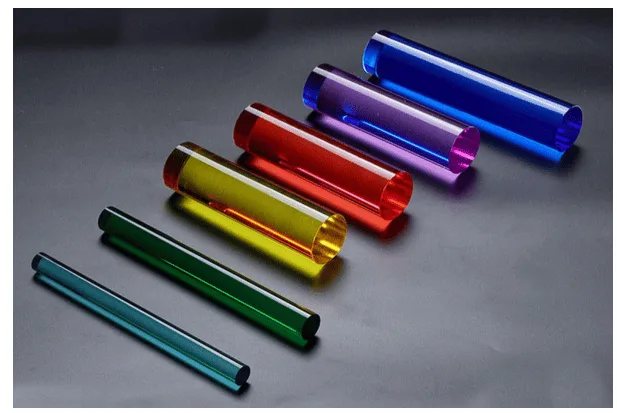Acrylic Rod: Exploring Clear and Cast Acrylic Rods, Tubing, and More
Introduction to Acrylic Rods
An acrylic rod is an acrylic solid cylinder. Acrylic is a plastic known for its transparency, versatility, and durability. Acrylic plastic is lightweight and strong making it suitable for decorative and structural use. Acrylic rods have a strong resemblance to glass due to their clarity and aesthetic appeal, but differ in that they are more impact resistant and easy to handle.
For more in-depth information you should view from Top Acrylic Rod Manufacturer and Supplier in China – Turbo
Types of Acrylic Rods: Clear vs. Cast
There are two main types of acrylic rods: clear extruded acrylic rods and cast acrylic rods. Clear extruded rods are produced through a continuous extrusion method which gives them a constant diameter and smooth surface. Because of this, they are more affordable and thus, suitable for general use. Cast acrylic rods are made through a casting process which results in superior strength and optical clarity. These rods are used when the application requires visual precision and quality.
View Top Acrylic Rod Manufacturer and Supplier in China – Turbo details to get into the details
Uses of Acrylic Rods in Different Industries
Acrylic rods are valued in many industries because of their strength, clarity, and lightweight characteristics. In architecture and interior design, they are employed in carving decorative features, illuminating fixtures, and display stands, as well as handrails. In medicine, they are found in some devices and laboratory equipment because they are easily sterilized. In the marine and aquatics industries, they are used in underwater constructions and structures because they are moisture and pressure tolerant. Versatility is an important reason why acrylic rods are used in diverse functional and artistic applications.
Properties of Acrylic Rods
Transparency and Light Transmission
Acrylic rods have remarkable transparency and light transmission qualities. Having near-glass clarity while transmitting 92% of light, acrylic rods are perfect for high optical clarity applications. Even under harsh conditions, prolonged light exposure does not diminish acrylic rods’ brilliance or beauty.
Durability and Resistance to Impact
Acrylic rods are also durable. They are strong enough to endure stress without shattering or breaking, making these rods perfect for safety-sensitive and longevity-sensitive applications, such as in public or heavily used spaces. Due to advanced acrylic being used, these rods will withstand everyday use and not diminish in structural integrity.
Weight and Density of Acrylic Rods
Compared to glass and metal, acrylic rods are lightweight, which simplifies their manipulation and installation. Most of the rods are also robust; but, in applications such as transportation and portable devices, the lower density is more desirable for applications where overall weight is important. There is greater practicality in the combination of lightness and strength and this is important across more industries.
Manufacturing Processes
Differences Between Extrusion and Casting
Extrusion and casting are the two main procedures for manufacturing acrylic rods. These procedures have different pros and cons and the selection depends on the specific application and the characteristics needed in the final product.
How Acrylic Rods are Extruded
The extrusion process is continuous and consists of melting acrylic resin and forcing it through a die of a specific shape. This method is efficient and is suited for mass production. Also, extruded acrylic rods are relatively cheaper and are of uniform size, which is ideal for high precision applications and low cost. In comparison to cast acrylic rods, extruded rods have slightly reduced optical clarity and durability which makes them more suitable for general-purpose applications.
The Casting Process for Acrylic Rods
Time and attention to detail turn value into craft. There’s a compromise with cast acrylics. They take a lot longer to make than extruded acrylics and for the same purpose. However, the superior versatility and premium quality of the customized cast acrylics make the increased investment of time to pay off. The optical clarity of a cast acrylic rod, its durability and ability to withstand cracking make it ideal for high-stress medical applications and high-end artistic displays. The premium attributes of cast acrylic pull considerably higher value on displays and artistic installations which is why cast rods are highly sought after even if they are expensive.
Choosing the Right Acrylic Rod
Factors to Consider
In the case of an acrylic rod, several critical parameters should be examined to ensure compliance for your application. Two of the most important parameters are outer diameter (OD) and length. The OD influences the rod’s size and whether it will meet design specifications, while the length corresponds to the intended use or scope of the project. Also, think about the possible need for custom rod modifications, like cutting or machining to a particular shape, to meet your specific requirements.
Comparing Acrylic Rods and Tubing
Comparing acrylic rods to acrylic tubing, though similar in many respects, serves a different role. Solid acrylic rods are suitable for structural applications where strength and rigidity are required. On the other hand, acrylic tubing is lighter and more appropriate for transporting fluids, decorative purposes, or use in other applications where reduced weight is preferred, due to its hollow center. While both options provide superior clarity and strength, the intended use should govern chosen specific characteristics in order to achieve optimal performance and functionality.
Recommendations for Specific Applications
For ornamental applications, either cast or extruded acrylic rods may be employed, though for projects needing the highest optical clarity and a more refined finish, cast rods are generally preferred. In the medical and industrial fields, where precision and durability are more critical, cast rods are more advantageous because of their greater resistance to stresses and cracking. On the other hand, hollow acrylic tubing is beneficial for projects such as aquariums or display cases. The demands of the application as a whole guide optimal material selection to realize intended outcomes.
Care and Maintenance of Acrylic Rods
Cleaning Techniques for Optical Clarity Preservation
To clean acrylic rods while maintaining their optical clarity, take care to avoid scratching or ruining their surface. No aggressive cleaning pads or detergent solutions. Use mild detergent soap solution with a soft microfiber cleaning pad, rinse with clean water, and thoroughly dry to prevent water streaks. For more stubborn cleaning, acrylic specific cleaners that will not damage the surface will work.
Acrylic Rods Storage Tips
To prolong the life of acrylic rods, they should be kept in a cool, dry area, and away from the sun and related heat source to avoid hyper-warping and degradation. They should be laid horizontally on a flat surface and wrapped with protective materials to avoid bending, scratching, or bending. If acrylic rods, are kept in a clean area, then they will reduce the need for excessive cleaning, which is the best scenario to minimize cleaning.
Acrylic rods, while robust, can have a few common issues. Of these, scratches are the most common and can readily be repaired with fine-grit sandpaper and an acrylic polishing compound. Cracks and crazing are instances of overstress and/or intense chemical exposure. To avoid these, rods must be used within their specified limits and be careful not to use incompatible materials. Discolored rods may be cleaned and polished, but to maintain clarity, any UV exposure must be minimized. With little care and attention, acrylic rods will maintain their appearance and functionality for many years.







